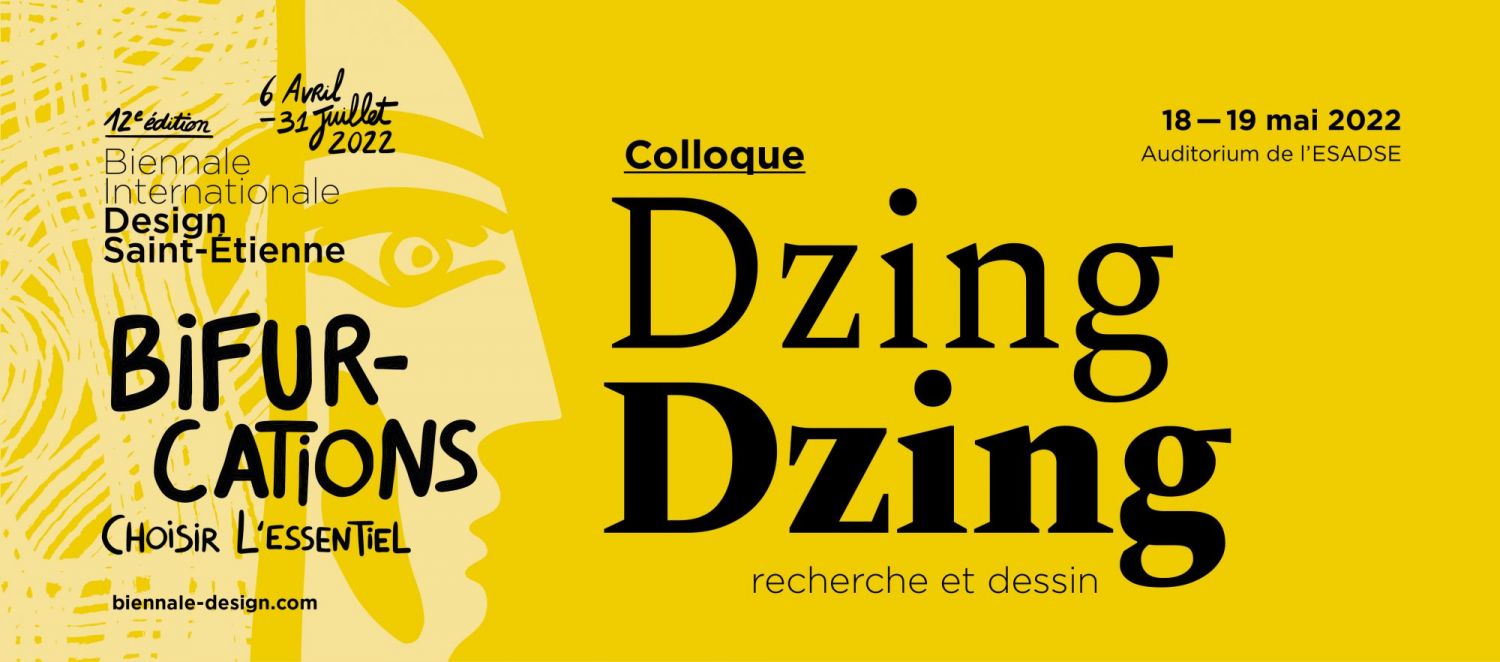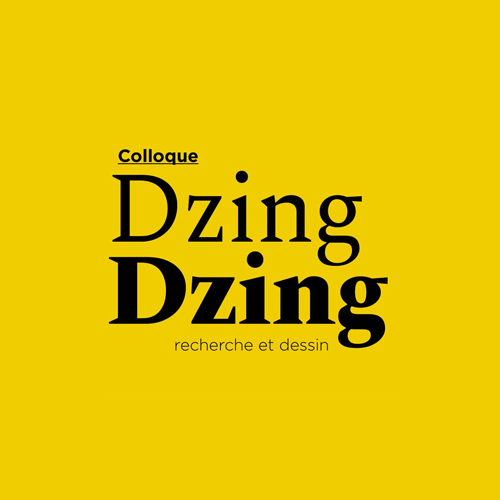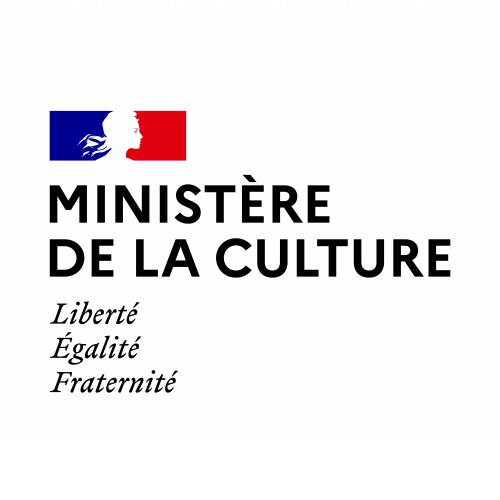
Registration is free but mandatory : In person attendance and/or webinar
8.30 – 9.00
Arrival of participants
9.00 – 10.00
Round table 3: Geometries of life/drawing and life sciences
Simone Fehlinger, Guillian Graves, Chloé Lequette, Michka Mélo (moderators)
Inthe 1970s, climatologist James Lovelock and microbiologist Lynn Margulis put forward the Gaia hypothesis, which holds that the Earth is a system that acts as if it is alive, consisting of organisms and their surroundings that are perpetually changing and interacting.
An acquaintance with the living world is now tending to become a lasting fixture in design practice. Attentive study of it is becoming more and more precise and explicit.
Designers involved in research that looks closely at the living world, or works with it, usually find that they see a complete (r)evolution in their practices. The dynamics of the living are indeed not very predictable and most often little known or completely unknown. This is why they inevitably exert an influence in the design process. And that then automatically affects the practice of drawing, an inherent part of design, which finds itself specifically modified.
During this round table session, with three designers, we are going to explore how the living world has led them to rethink their approach to design, the steps in the design process. But also to examine how they have been encouraged to reconsider their drawing practice(s) by borrowing methods, tools and inspiration from other disciplines.
Designing "with" and for the living world reflects and puts the spotlight on the way a bifurcation is negotiated that now has a branch where thenon-human plays an active role.
Simone Fehlinger, holder of a master's in Political Arts(SPEAP) from Sciences Po Paris, is developing a research methodology at the intersection between art, design and social sciences. She is exploring realities based on fiction, questioning the performativity of design and its capacity to create ideologies through form. With a particular interest in anthropocene fantasies, political fictions and contemporary visual and material culture, she scrutinises design as a discipline defining the interactions between humans and their natural and artificial environments. At the Deep Design Lab, she is currently leading the "New Weather TV" design research project, which is looking at the images used in weather forecasts and the modern fictions modern the latter embeds into our daily lives.
Guillian Graves is a designer, agraduate of the National Institute for Advanced Studies in Industrial Design (ENSCI-Les Ateliers) in partnership with the Federal Institute of Technology of Lausanne (EPFL). He founded and heads Big Bang Project, an agency that aims to develop, thanks to science and design, innovative solutions in response totoday's and tomorrow's great challenges. He is also a lecturer, co-founder and co-head of the Master's of Science course in Nature-Inspired Design at ENSCI-Les Ateliers, as well as working with the Centre for Research in Design (ENSCI-Les Ateliers & École Normale Supérieure Paris Saclay), teaching at Sciences Po Paris and giving talks.
Chloé Lequette, a designer,illustrator and naturalist, is committed to working towards the ecological and social transition. More specifically, she divides her time between observing nature, her role as general secretary of the "Forêts communes"(Common forests) agro-forestry programme and her post as head of Design & Cross-cutting Methodologies at the Ceebios (Centre for biomimicry). She sees drawing as a powerful practice that can keep us curious and enthralled, and help cultivate a necessary feeling of interdependence with the living world.
Michka Mélo is a bio-engineer who qualified at Federal Institute of Technology of Lausanne (EPFL). He conducts projects on social ecology, at the interface between the living world, technology and collective organisation, working with designers and artists. He is currently sustainability adviser for student projects at EPFL, an associate explorer with FoAM, a cross-disciplinary research and creation collective, and a visiting lecturer at art, design and engineering schools.
10.00 – 10.30
Esquisse 3
Aurore Turpinat: Visual letting-go
Renaud Chabrier: Drawing as a vector of transformation
Manon Ménard: Drawing to think: another form of writing
Aurore Turpinat is an artist who was born in Dreux, France in1995. After recently moving to Clermont-Ferrand, she continues to explore and experiment with a very particular way of using space. In 2020 she earned her DNSEP (postgraduate diploma) in Art (Spaces option) with distinction at ESADSE.
With her special interest in spatial practices, her research focuses on mutations of objects by digital means. Orderly, classified and neat, her drawings play around with space.
The architectural process behind her different creations combines investigative work with the creation of experiences.
Renaud Chabrier is an author, film-maker and researcher specialising in the relationship between drawing and movement. After a scientific education, he developed an interest in animated films, contemporary dance and children's books. The Cité des Sciences, where he developed new forms of narration thanks to morphing and video mapping, then became his main workplace. After a thesis on drawing and life sciences defended in 2020, he is now working with École Polytechnique on the association of hand sketching and artificial intelligence.
Manon Ménard is a graphic designer and PhD design student at the Projekt laboratory at the University of Nîmes.She is working on a thesis on prospects for inclusion through design in an educational context based on the experiences of autistic students. Her research project is tied in with the "Aspie-friendly, building an inclusive university" project. She teaches graphic design, practical plastic arts and drawing on the Design, Anticipation and Society bachelor's degree course at Jean-Jaurès University in Toulouse and is a PhD student attached to the LLA CREATIS laboratory.
10.30 – Break
10.40 – 11.40
Round table 4: Blurred lines. Drawing, acritical tool for representations to take us beyond acosmism.
Isabelle Daëron, Axelle Grégoire, Ludovic Duhem (moderators)
The advent of the Anthropocene is most often presented as a planetary climate crisis produced by human activities whose effects are analogous to a geological force, but also a crisis of representation that is now reviving the issues around drawing as a tool for thinking in the Design field. This round table session proposes to scrutinise the issues as follows: what direction to take and how to position ourselves in the world without using the dominant modes of representation, in particular those inherited from modernity ? How can we live among others and, more precisely, among non-humans, in particular through drawing (lines, traces, spaces) ? How can we re-establish the link to place ? How should we act and design "in troubled times" ?
Drawing provides us with a way of questioning the intangible and the immeasurable through field work, in terms of scale (micro and macro) as well as in terms of time (past and future). Understood in this way, drawing then becomes a research tool in Design, which questions the limits of our perceptive systems, de-conditions and liberates the design process so that, in the end, we can think out how to transform practices by a critique of representation.
Isabelle Daëron, a graduate of ENSCI-Les Ateliers and ESAD Reims, designs scenarios that combine natural resources and habitability. Her projects put into perspective the importance of the current environmental issues and their field of application (flows, mobility, public space), whilst making the most of the resources available in the territories concerned. She set up the Idaë studio, whose activities are structured around three areas of competence which act in synergy: urban design, spatial design and research.
Axelle Grégoire is an architect. She develops projects that help to renew the representation of territories and tore-write, with the S.O.C. agency and her studio, Omanoeuvres. This inter-disciplinary work finds its expression in different media: from mapping (Terra Forma published in 2019 by Éditions B42) to cooperative games (Sylvarama since 2018). Since 2020, she has been a doctoral student at the CESCO (MNHN), supervised by Anne-Caroline Prévot, as well as teaching at ESAD Valenciennes.
Ludovic Duhem is an artist and philosopher. He is currently a research coordinator and he teaches philosophyof art and design at ESAD Valenciennes. His research focuses on the relationships between aesthetics, technology and politics seen through the prism of the ecological challenges. He is also working on developing an ecosocial theory of design based on mesological and bioregionalist thinking. He recently directed, for ESAD Valenciennes, the books of papers Design écosocial. Convivialités,pratiques situées et nouveaux communs (with Kenneth Rabin, It:éditions, 2018); Design des territoires. L'enseignement de la biorégion (with Richard Pereira De Moura, Eterotopia, 202O); and Écologie et technologie. Redéfinir le progrès après Simondon (with Jean-Hugues Barthélémy, Éditions Matériologiques, 2022).
11.40 – 11.50
Esquisse 4
Clémence Mathieu, Relational cartography for the design of water landscapes
Clémence Mathieu is a professional landscape designer, as well as being an artist, writer and researcher, with an interest in territories where the relations between the human and non-human worlds are intermingled.
She questions the representations and manufacturing of landscapes and the involvement of fictional processes in the development of planning projects. She attempts, through the device of fictional narrative, to propose tools that capture and create care, attachment and common worlds to read and plan landscapes.
11.50 – 12.30
Summary with Guest Speaker
Sophie Pène is the curator of the Le Monde Sinon Rien (The World of Nothing) exhibition, which is dedicated to transformations happening in design schools under the impetus of the students, who are lucid in their perception of social and ecological change. A professor of Information and Communication Sciences at the Universityof Paris (2005-2021), she is a member of the French National Design Council (CND) (2021-2023). She was a member and Vice-President of the French Digital Council (CNNum) (2013-2017), the Fabrique de l’industrie and the Scientific Council of the Institut Mines Telecom.
This conference is co-organised by the Ministry of Culture and the 12th Biennale Internationale Design Saint-Étienne













